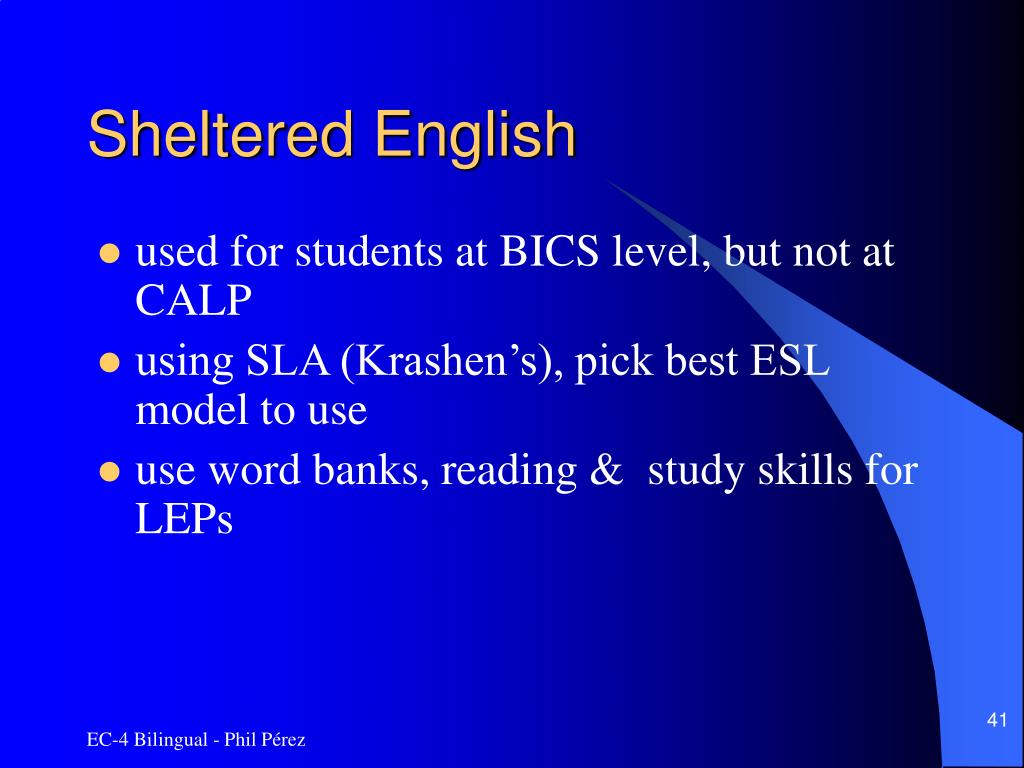

Instructional practices and curriculum are designed to support students’ acquisition of the English language and students receive instruction around how English functions within the four domains of reading, writing, listening, and speaking. 3 Citations Part of the Encyclopedia of Language and Education book series (ELE) Abstract Content-based instruction (CBI) is an overarching term that refers to instructional approaches that make a dual, though not necessarily equal, commitment to additional language- and content-learning objectives. This chapter provides effective teaching practices for ELs and instructional activities that teachers can implement to help young ELs succeed academically. el, that will allow students to engage in content learning in English.

Therefore, the focus of the chapter addresses: the changing demographics, historical reasons for low achievement of ELs, and how educators can use their understanding of best practices to motivate ELs and increase their academic achievement.

To use sheltered instruction in the classroom, you have to implement the Sheltered Instruction Observation Protocol (SIOP) Model, which is a research-based model of sheltered. These complex factors impact the instruction and ultimate success of student learning which is extremely detrimental to ELs. Sheltered instruction is a strategic approach to teaching English language learners that allows learners to understand content as they develop language proficiency. The principles of effective sheltered instruction and content-based ESL. As the number of English Language Learners (ELLs) increases throughout the district, the Office of Bilingual Education is implementing New Jersey Department of Education’s approved Sheltered English Instruction (SEI) program in select schools. Studies have found factors affecting student success in public schools: 1) inadequate preparation of teachers, 2) ineffective teaching practices, and 3) at-risk school environments. planning programs and instruction so English learners can succeed in school. The rising numbers of English Learners (ELs) in our schools requires educators to have a specialized knowledge base for understanding their linguistic needs, especially when planning for instruction teachers also need to use language acquisition principles for working with ELs and integrate effective instructional strategies in their teaching.


 0 kommentar(er)
0 kommentar(er)
